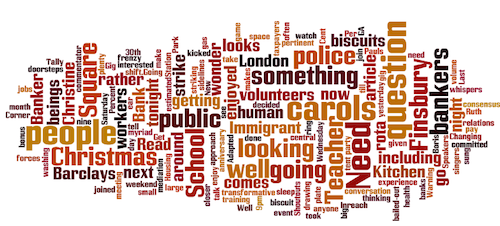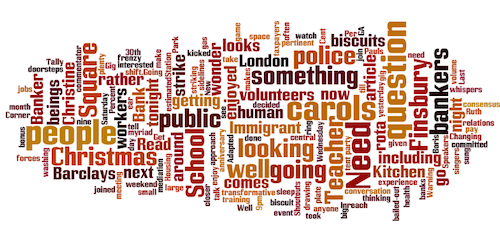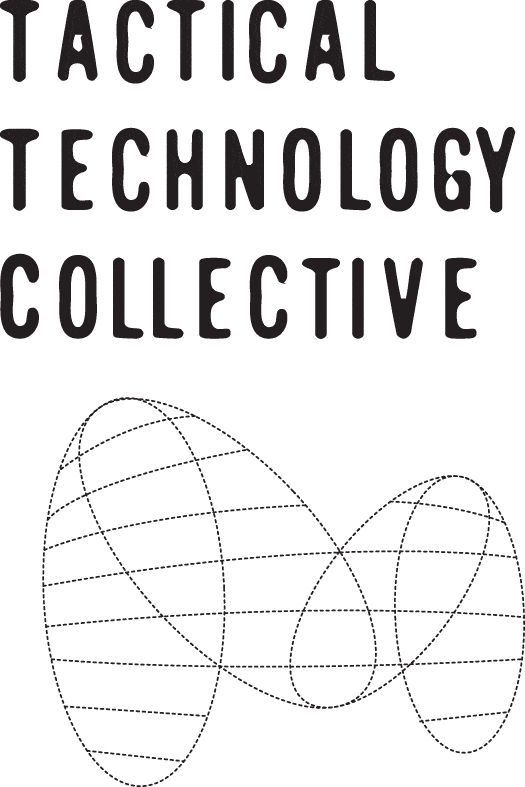



This is an online tool that makes word clouds out of any text – including texts found in blogposts, news articles or web pages. It analyses whatever text you give it and counts how often each word is used. In the image that it creates for you – a “wordle” – words with more mentions are printed larger than those with less. This visual overview can serve as an introduction to a text, attracting the attention of your readers and giving them a quick impression of what they're about to read.
The freedom to change colour schemes, fonts and layout, along with ease of use make Wordle quite fun to use. It can be used to visualise text from different languages, although this is really a trial and error process. For example, Wordle won't work with Burmese text yet. Many Eyes also creates word clouds like these, though Wordle gives you more control over the colours and appearance.

in seconds you can create an interesting-looking visual to illustrate your writing and use as a talking point.
having to fiddle with the plug-in settings on your Internet browser to make it work properly, and it only working with single words, and not phrases.
Gentle
Yes, it is used online through a web browser.
You can put cut and paste any text directly into Wordle. You can also use as a source any blog or website with a news feed. Keep in mind that if you give Wordle a news feed it won’t necessarily create a representation of all that website's content. This is because the news feed itself may contain only a headline or the first few paragraphs of a page. After you created your wordle, you can remove words by right-clicking on them.
Plain text and RSS
Embeddable
Arabic and English
Before relying on Wordle for anything, consider that Wordle is run by an individual as a personal project. Also, Wordle doesn't allow you to save a high resolution image you have created on your computer, so you can either take a screenshot or save on the Wordle website, where you and everyone else can look at it. To remain private, create a Wordle and take a screenshot of it.
Jonathan Friedman, but parts of the Wordle software belong to IBM.
Proprietary
The US-based Sunlight Foundation created Earmark My Words using Wordle. It shows what American elected representatives were talking about, alongside the amount of public money they had successfully managed to direct to their constituencies.



